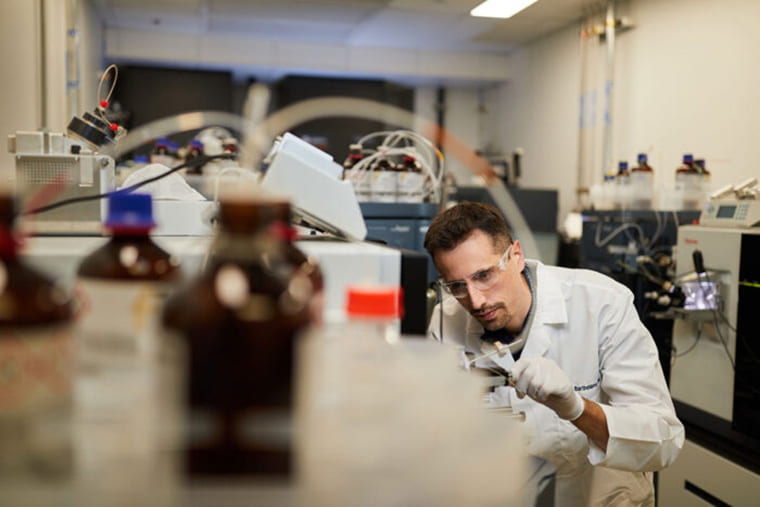A new center established at Washington University School of Medicine in St. Louis aims to accelerate research into biomarkers of neurodegenerative conditions such as Huntington’s and Parkinson’s diseases, amyotrophic lateral sclerosis (ALS), multiple sclerosis (MS) and the so-called tauopathies, a group that includes Alzheimer’s disease along with rarer diseases such as frontotemporal dementia, corticobasal syndrome and progressive supranuclear palsy. The Tracy Family Stable Isotope Labeling Quantitation Center for Neurodegenerative Biology (Tracy Family SILQ Center) helps researchers discover, study and validate biomarkers of such diseases, with a goal of identifying new drug targets and creating better diagnostic and prognostic tests.
Many neurodegenerative diseases are characterized by the gradual accumulation of toxic clumps of certain proteins in the brain. The specific protein involved varies by disease — for example, amyloid beta is integral to Alzheimer’s disease, alpha-synuclein to Parkinson’s — but what stays the same is an unhealthy tendency of the protein to aggregate, often due to faulty regulation or a malformed shape.
By attaching a label to key proteins in the brain, researchers can track their production and clearance, and identify the factors that influence turnover. Further, by using labeled proteins in samples from other parts of the body such as cerebrospinal fluid or blood, researchers can also make highly precise measurements of proteins associated with disease and track how they change over time and under specific conditions. Such data can lead to crucial insights into how each disease develops and open up new avenues to diagnosing, preventing or treating it.
“Neurodegenerative diseases are terrible diseases that currently have limited treatment options,” said Randall J. Bateman, MD, the Charles F. and Joanne Knight Distinguished Professor of Neurology and the center’s director. “Using labeled proteins is a powerful way of accelerating discovery for such diseases. Many different investigators are interested in using a labeled-protein approach to studying Parkinson’s, ALS, MS, frontotemporal dementia and more. But using this approach is not trivial as it requires considerable resources in terms of specialized equipment and expertise. Based on our success in Alzheimer’s disease, we established this center to help develop this approach across different disease areas and accelerate progress toward better diagnostics and therapeutics.”
The Tracy Family SILQ Center contains seven cutting-edge mass spectrometers and several robotics units. The center’s faculty includes Nicolas Barthélemy, PhD, an assistant professor of neurology, and Kanta Horie, PhD, a voluntary research associate professor of neurology. Barthélemy and Horie have extensive experience developing biomarkers for Alzheimer’s disease. Barthélemy is developing a blood-based diagnostic test for Alzheimer’s disease based on a form of the protein tau, while Horie has shown that a different form of tau in the spinal fluid can indicate the stage of disease. Recruitment for additional faculty and staff members is underway.
